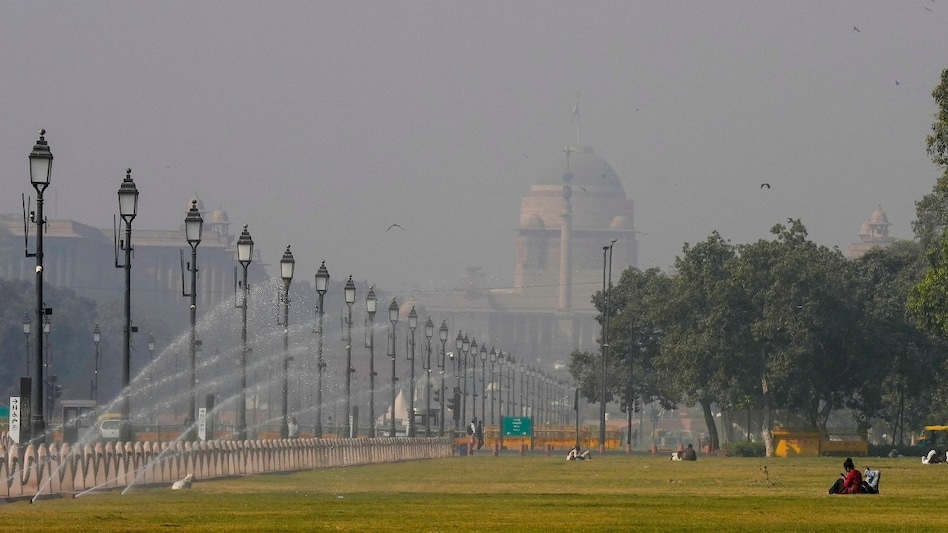 Public frustration over air pollution is growing with pollution-related complaints in Delhi-NCR increasing by 33 percent in 2024 compared to previous years, according to CPCB data.
Public frustration over air pollution is growing with pollution-related complaints in Delhi-NCR increasing by 33 percent in 2024 compared to previous years, according to CPCB data. Public frustration over air pollution is growing with pollution-related complaints in Delhi-NCR increasing by 33 percent in 2024 compared to previous years, according to CPCB data.
Public frustration over air pollution is growing with pollution-related complaints in Delhi-NCR increasing by 33 percent in 2024 compared to previous years, according to CPCB data.Delhi’s air quality showed slight improvement for the second consecutive day on December 2, although it remained in the ‘poor’ category with an Air Quality Index (AQI) reading of 273 in the morning.
As per the Central Pollution Control Board (CPCB), Delhi’s 24-hour average AQI on December 1 was 285, marking an improvement into the ‘poor’ range and offering a welcome respite after 32 consecutive days of ‘very poor’ and ‘severe’ air quality (AQI above 400). The last time Delhi’s air quality was categorised as ‘poor’ was on October 29, with an AQI of 268.
Experts attribute this improvement to dry north-westerly winds and abundant sunlight, which helped to disperse pollutants. However, the city’s air quality remains suboptimal, as an AQI between 201 and 300 is still considered harmful to sensitive groups. The absence of dense fog has allowed sunlight to reach the surface, aiding the scattering of pollutants as the mixing height stayed relatively high.
The India Meteorological Department (IMD) reported a minimum temperature of 10.4 degrees Celsius on December 2, 0.9 degrees above the seasonal average. The maximum temperature is expected to reach around 27 degrees Celsius, with humidity levels at 89 percent at 8:30 a.m., according to the IMD.
The Supreme Court on November 28 ordered Stage IV of the Graded Response Action Plan (GRAP), currently in force to tackle the severe air quality in Delhi, will continue to till December 2.
Rising complaints about pollution
Public frustration over air pollution is growing with pollution-related complaints in Delhi-NCR increasing by 33 percent in 2024 compared to previous years, according to CPCB data. Between October 2021 and September 2023, 9,345 complaints were filed on social media platforms regarding pollution in Delhi-NCR. This number rose to 12,456 by September 2024, reflecting a 33 percent spike.
Despite the rise in complaints, resolution rates have only seen slight improvement. Previously, 40 percent of grievances were resolved, whereas in 2024, 57 percent of complaints remain unresolved, according to CPCB data.
The Municipal Corporation of Delhi (MCD) topped the list with 3,238 complaints in 2024, an almost fourfold increase from 905 in the previous year. Notably, 88 percent of these complaints remain unresolved. The Delhi Jal Board received 778 complaints but resolved only 22 percent. In contrast, the Delhi Traffic Police resolved 98 percent of their 596 complaints.
The National Highways Authority of India (NHAI) resolved just five of the 116 complaints it received, and the Delhi Cantonment Board left one complaint unresolved.
Similar trends are observed in NCR areas like Gurgaon and Ghaziabad. The Municipal Corporation of Gurgaon saw 1,937 complaints in 2024, up from 1,344 in the previous period, but only 38 percent were resolved. In Ghaziabad, the municipal body resolved 84 percent of complaints, showing a relatively better response rate.
Delhi’s AQI had spiked to 419 on November 20, followed by readings of 371 on November 21, 393 on November 22, 412 on November 23, and 318 on November 24.
The AQI categories are as follows: 0–50 is ‘good,’ 51–100 is ‘satisfactory,’ 101–200 is ‘moderate,’ 201–300 is ‘poor,’ 301–400 is ‘very poor,’ and 401–500 is ‘severe.’
(With inputs from PTI)